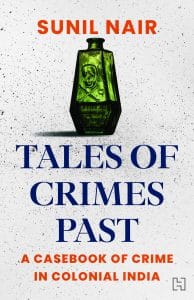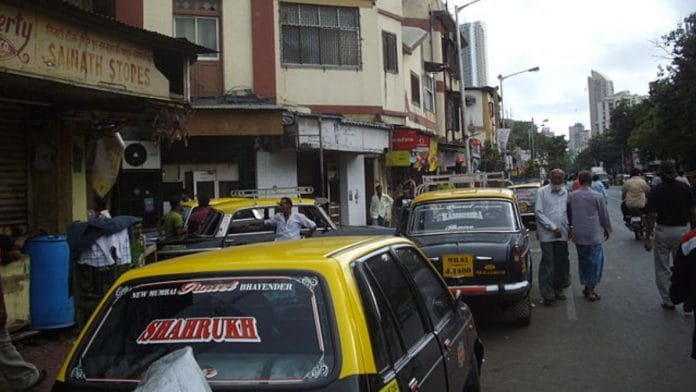Mirza’s answers were evasive. The girl, who was called Akootai, had died of venereal disease, he said. Jagoji was not convinced and he was marched off to the Maharbawdi Police Station for further questioning. Inspector Lewellyn O’Brien and Sub-Inspector Mahomed Khan then proceeded to Hajam Lane to conduct an inquiry. A cursory examination revealed a number of bruises on the woman’s body, and the corpse was sent to the morgue for a post-mortem.
The story that emerged was shocking. Akootai had been beaten, starved and tortured for several days. The police surgeon, Arthur Powell, who examined the body of the unfortunate woman at the morgue a day later, stated in his deposition that her death had been caused by injuries sustained by the beating she had received from her tormentors. There were 18 large weals on her body caused by the blows of a cane or stick. There were several large bruises on her legs, thighs, arms, back and head. The fifth and sixth ribs on the right side had been broken by the blows inflicted on her body and had been the cause of her death.
But why was Akootai beaten to death? This is her story.2
Akootai (alias Taibai) was a Mahar and, according to a statement provided by her cousin Naikoo, came from Kolhapur State which lay to the south of what was then the Bombay Presidency. Her age is not given in the documents relating to the case but she was probably in her twenties like the other women in the brothel. Naikoo, a labourer employed in the Drainage Department of the Bombay municipality was not the most reliable of witnesses. Akootai, he said, was married, but he could not remember her husband’s name! With Akootai not alive to contradict him, Naikoo could have been lying and may well have sold her to the brothel himself to clear an outstanding debt.
Also read: Mughal and Rajput art, Western-style—Company paintings, the lovechild of India & British Raj
This was quite a common practice, and men who found themselves in debt would sometimes sell their wives, daughters or other female relatives to pay off a brothel owner. Often, a destitute widow or a deserted wife would be enticed with offers of a job as a house maid or ayah and sold to a brothel. Occasionally, a woman would enter a brothel herself to pay off some debt or simply to make ends meet. Akootai’s antecedents are not very clear, but she seems to have been in Mirza’s keeping for some two years before her death.
Her lot cannot have been an easy one. Women did not enter the hellhole of Kamathipura in search of the good life.
‘Kamathipura,’ as Samuel Sheppard’s excellent Bombay Place- Names and Street-Names, published in 1917, informs us, ‘is commonly used to denote the prostitutes’ quarter, and the same may be said of Grand Road and (Cursetji) Shuklaji Street, both of which connote a good deal more than geography.’
According to Joyce, many ‘heinous crimes’ were committed in these ‘houses of debauchery. Many young girls are enticed away from their parents, guardians, and respectable homes, and received in these haunts of vice, while others traffic for the spoliation of female honour.’ Men, too, were not entirely safe in these places and, unless careful, could find themselves robbed, assaulted, or worse, especially if under the influence of liquor.
An amazing variety of nationalities were represented in its insalubrious quarters. The white sailors coming off the ships in the nearby port could choose from Poles, Germans, Italians, French, Russians, Armenians, and Japanese. European-only brothels catering to white men were quite common and in the 1880s Shuklaji Street, where there were a number of these establishments, was also known as Safed Galli (white lane).
According to S.M. Edwardes, police commissioner of Bombay from 1909 to 1916 and author of The Bombay City Police – A Historical Sketch 1672–1916 and Crime in India, there were some who believed that the European prostitutes provided an extremely essential service to white manhood and the empire. If they were to disappear, it was feared, white men would ‘resort to Indian women’ – something that ‘could not be regarded with impunity by those responsible for the general welfare of India’. The colonial state had, therefore, established brothels for soldiers near their cantonments or regimental bazaars where the men could get some sexual release. These places were regulated and health checks were conducted to ensure that the women were not infected with venereal disease.
Also read: Who truly owns the biryani? Experts say Dharmasastras, Mahabharata mention it
The European prostitutes, Edwardes informs us, usually came to India of their own free will after ‘serving an apprenticeship’ in Europe, Constantinople or Egypt, and while most of them lived and died in debt, some managed to save enough to take back to their own countries and lead comparatively respectable lives. However, the colonial administrators tried to ensure that no British woman indulged in such activities, and prostitutes from Britain were discouraged and liable to be deported if found practising the world’s oldest profession in the empire’s colonial outposts.
With the Indians though, it was a different story. The ordinary sex-starved Indian seeking a prostitute in Bombay, who could not savour the delights of white skin, had to make do with their brown-hued counterparts, and so he went looking for his wares in the ‘cages’ of Kamathipura. These were degrading affairs, the women sitting behind barred windows and doors, trying to catch the attention of the men passing by in the street. It is said that it was the police in the 1890s who insisted on the brothel-owners putting up metal bars on their establishments so as to prevent the men, often the worst scum of the city, from forcing themselves on the women.
The 25-year-old Mirza, who hailed from Punjab, was officially a money-lender, as were many of his kind in the city, and this may have been one of the ways he got women in his keeping – in lieu of unpaid debts. Mirza was helped by two women, Gangabai (alias Mariambai) and Gomtibai (alias Sakinabai). The brothel- assistant, of whom there was always usually one (and sometimes the brothel-keeper herself, if a woman), was more often than not, a ‘time-expired’ prostitute (to use Edwardes’ own colourful phrase). No longer able to entice customers through her charms, she kept her younger charges in line, though it must be said that she usually took care of the women and ensured that they came to no harm, either from the attentions of her bawdy customers or from the police, and sometimes from a tyrannical brothel-owner.
 This excerpt from Sunil Nair’s Tales of Crimes Past has been published with permission from Hachette India.
This excerpt from Sunil Nair’s Tales of Crimes Past has been published with permission from Hachette India.






